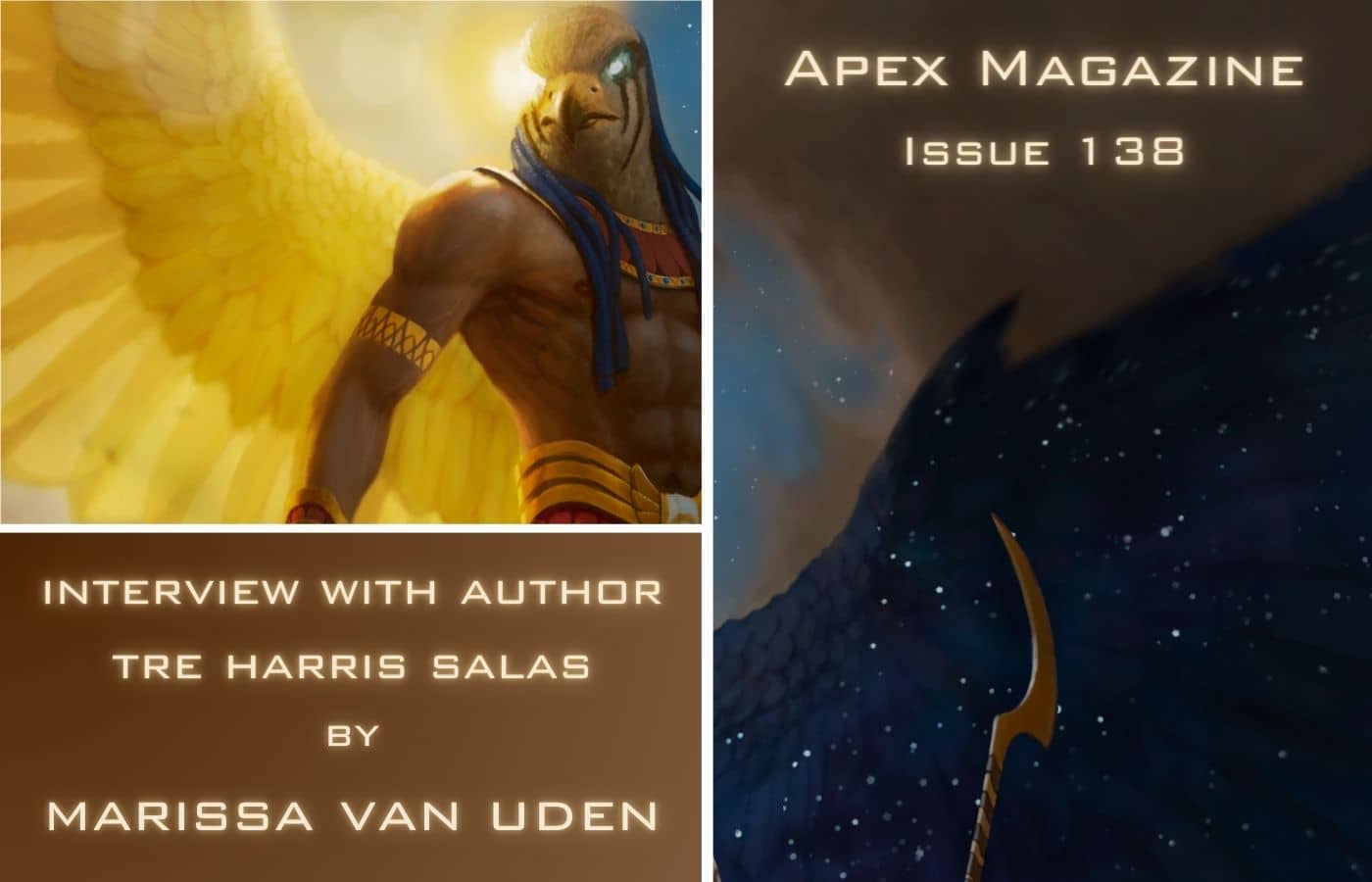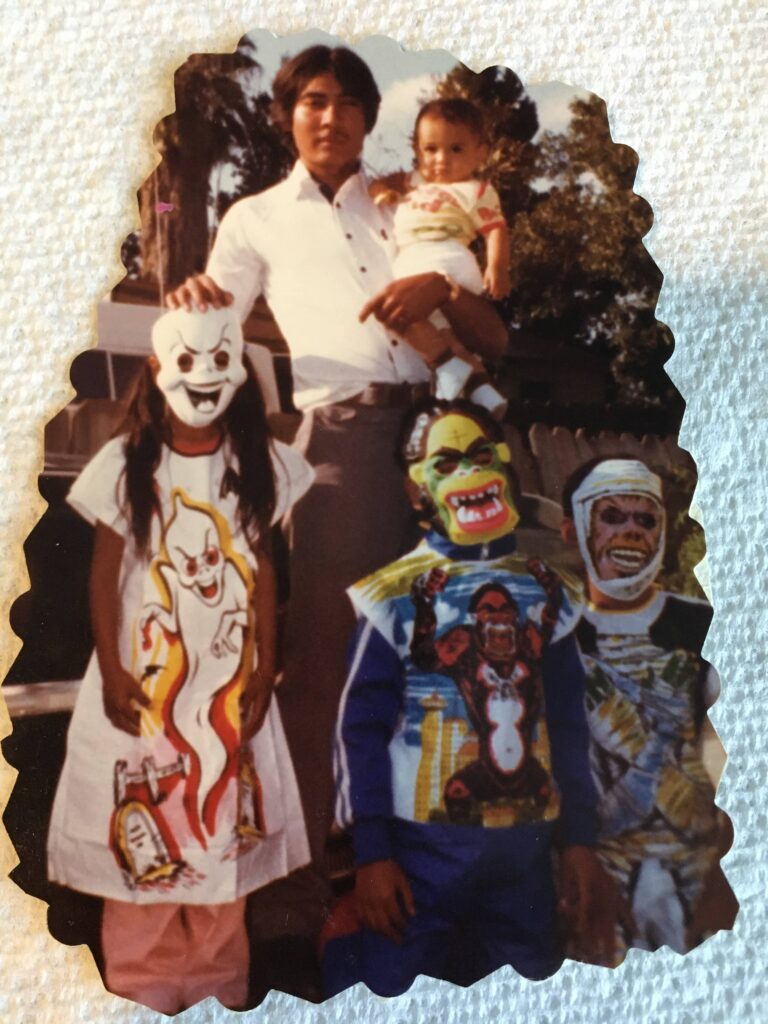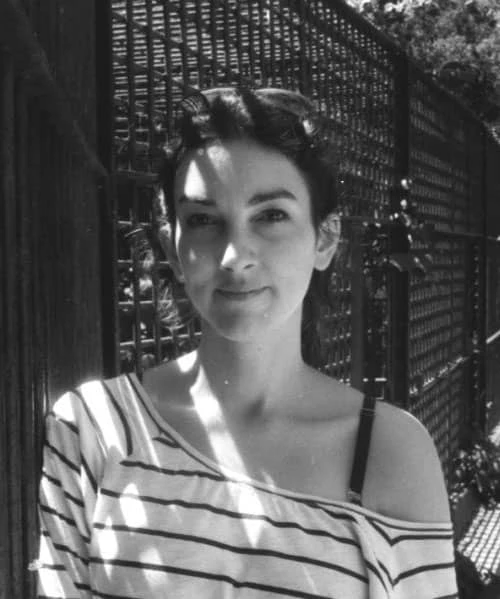
In “Chupa Sangre,” young Carlos lives in an area where first pets and then children have started to go mysteriously go missing, leaving only splashes of blood behind. As he dives deeper into the mystery of what kind of monster is terrorizing his neighborhood, he discovers the disappearances are tied to his own abuela’s past, and to the warnings she’s been giving locals for years. But the situation is not quite what it seems ...
Tre Harris Salas is a Black and Mexican writer who writes speculative fiction with a literary twist. He currently resides in Kansas City where he contemplates the dreadful, the macabre, and the end of all things sacred.
Marissa van Uden: Thank you for sitting down to chat with us today, Tre! I’d love to start with the origins of this wonderful dark story. Could you tell us a bit about what inspired the idea, and how this took shape on the page?
Tre Harris Salas: Thank you all for everything you’ve done. It’s funny that you call this a dark story. I never thought of it as one. It of course is, looking at it years later, but when I first started this story, my focus was on the metaphor which I hope comes across as beautiful and heartfelt. I really wanted to talk about my abuela and her journey to this country. She really did travel across the border in order to find my abuelo. This is as much her story as it is mine. Thousands of people try to find a better home in America and they are constantly ostracized, arrested, and dehumanized for their very human desire. What this took shape as on the page was the Chupacabra.
MVU: Did you have the ending in mind when you started the first draft, or did that develop during the writing? How different is the final draft to the first draft?
THS: I did not have the ending in mind, not at all! Gosh, this story went through so many transformations, it’s crazy. It took a couple years and over fifty submissions to other magazines to finally get Apex’s acceptance. It means the world to me that it was Apex that said yes.
The first draft was actually a story about paranormal investigators traveling to the US-Mexico border in order to capture the legendary Chupacabra on camera. About thirty pages in, and no end in sight, I scraped the idea and started over. At the time, about a year ago, I was writing a novel about my grandparent’s experience living in America after they fled to Fresno, California. I was looking through some old photos my mom had from her childhood and found a picture of her and her brothers in creepy looking Halloween gear. Paper masks and demented smiles. That got me thinking about a shirt my uncle had with a Chupacabra sucking a soccer ball. It was for some local team, but that Chupacabra was unlike all the other Chupacabras I’d read about. It was scaly and alligator like and from there it all kind of just clicked.
MVU: Wow, that’s an amazing backstory to this piece. I’m so glad it found a home at Apex Magazine as well! Carlos and his abuela form a close relationship with the monsters in this story, even after they kill so many in her community. They relate to the monsters’ need to survive and protect their family at all costs, and indeed they even see them as family (and the Chupacabra see them the same way). What is it about Carlos and his abuela that enable them to see the monsters in this way when so many others might have hunted or destroyed such creatures?
THS: Well, first off, I think it’s important to mention that I have never had a conversation with my abuela. Like never. Though I am half Mexican, my mother never taught me Spanish, and for one reason or another I never learned from being around my abuela. I knew basic stuff. Food. Eggs. Beans. Water. Quiet down. But the connection I have with my abuela is strong, regardless of our language barrier. The love between us is unlike any I’ve experienced before. It’s that relationship that drives the love these two people have for the Chupacabras. In my opinion, people fear what they don’t know, and they fear what is different from them, be that animal or human or even way of life. That connection is there because, like the Chupacabras, the two of them haven’t necessarily been loved or accepted.
And, awkwardly enough, I do think that this country (the US) has a long history of destroying what we deem a threat. I see this story has a commentary not just on love and family, but on the immigration experience. Carlos and his abuela don’t hate them because they know the immigrant plight.
 Mom with her brothers. She’s the reason I write such creepy tales.
Mom with her brothers. She’s the reason I write such creepy tales.
MVU: That’s so true, and I thought the underlying commentary here was just beautiful. What was your favorite scene to write, and why? And which scene or moment did you find the most challenging to write?
THS: My favorite scenes to write were definitely the abuela parts, where she is a child. I wanted to make them as fable-like as possible. I also wanted it to be like the fairy tales and nightmares my mom would tell me about her own upbringing. She was two when my abuela brought her over to the States, but still has memories of the difficulty growing up brown in America. For whatever reason, I’ve always loved writing stories that start with “When I was a child ...” There is something magical about the statement. You are no longer a child. You think about those days often. You are never going back.
In terms of most challenging to write, I’d say the cave scene, where Carlos finds the Chupacabra’s victims. It was challenging in the sense that I wasn’t sure how the character would react. When I realized how he would, I knew then I had to change the story a bit to make it more likely he learns to love these creatures.
MVU: If we were to find you in your favorite spot, reading one of your favorite books, where would that be, and what would you be reading?
THS: Oof, this is tough. I have so many spots. Boulevard Brewing Company is one. The view is perfect. My car is another. I love audiobooks. That’s where I read the classics. But the very best spot is probably the most predictable.
I’m in my bedroom. I’m laying down on the bed, next to the window and letting the sun hit me on the chest. It’s warm. The window is open and sometimes, when I get tired, I put the book down and I watch the squirrels chase each other on the trees. I’m reading The Lottery and Other Short Stories by Shirley Jackson. Or The Bell Jar by Sylvia Plath. Or something by Stephen King, Cormac McCarthy, Chuck Palahniuk, Samanta Schweblin, Josh Malerman, or any comic by James Tynion IV. Sorry, I know I cheated with this answer, but come on, it’s so hard.
MVU: It’s an amazing answer! Wonderful reads, and the sensory details you evoked for us are just perfection. Do you listen to music when you write, or have any specific rituals or practices to get into the right headspace for writing?
THS: I love this question because I get to talk about my weird writing routine. I write in the morning. Basically always. If I don’t, I kind of feel like crap for the day. I make coffee for myself, but I don’t always drink it. I try to get about 1,000 words done. Sometimes the words are good, sometimes they aren’t. Music is my secret weapon, I think. It’s the most important part of the process for me.
I listen to a song over and over again, on repeat. It usually has no words, but it always has the vibe I’m trying to achieve in the story. Some examples would be “On Reflection” by Max Richter, “September Song” by Agnes Obel, “Reborn” by Colin Stetson, and “Go Tomorrow” by Newton Brothers.
 Whenever I get stuck on a story, I like to go to the WWI museum and scope out the land.
Whenever I get stuck on a story, I like to go to the WWI museum and scope out the land.
MVU: What pieces of fiction from your youth do you think most influenced your writing today?
THS: Oh goodness, another hard one. I’m just going to quick fire this list, but I will say that I’m going to include authors, books, poems, poets, TV shows, movies, video games, and comic books. Stephen King, Shirley Jackson, Sylvia Plath, Ned Vizzini, Darren Shan, the Goosebumps series, A Series of Unfortunate Events, Bioshock the video game series, the Saw franchise, the Halloween franchise, Death Note, anything Batman, anything Marvel Zombies, and lastly, in celebration of “Chupa Sangre,” I’d say Pokémon!
MVU: Could you share anything about what you’re working on now? Any ideas you’re excited to explore next?
THS: I just finished a novel about a hole that appears in a girl’s basement. It blends people to oblivion. The girl finds it after her boyfriend accidently falls in. In exchange for more bodies, the hole, or whatever dwells in it, promises it will bring back the main character’s dead brother, who has been dead for years at that point. I wanted to explore what we do for those we love and the effect that addiction has not only on the mind but on the body. Now that I’m done with that novel, I’ll let it rest a bit.
I’m working on another novel which will be a series of monster stories that range from the mundane to the extraordinary. In total, it’ll be about fifty flash fiction pieces. They will all be connected through certain themes (death, loneliness, sex, loss, love, Chuck. E. Cheese ball pits), but that’s about it. They will all stand on their own, hopefully!
MVU: These both sounds amazing. Where else can readers find your fiction or find you online?
THS: I have works published in Space and Time Magazine, Moon City Review, Tales to Terrify, The Journal for Compressed Creative Arts, Allegory Magazine, The NoSleep Podcast, and other literary/ genre magazines.
MVU: Thank you so much for joining us to dig into this dark and fascinating monster story, and for sharing your writing process with us!









